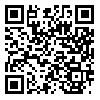Volume 22, Issue 3 (Jul- Aug 2014)
JSSU 2014, 22(3): 1217-1225 |
Back to browse issues page
Abstract: (6540 Views)
Introduction: Ankyloglossia is an anatomic developmental anomaly determined with thick and short fibrotic ferenum. Hyoid bone plays an important role in tongue physiology and tongue changes, in turn, have sever effects on malocclusion. Taking in to account the effects of tongue position on oropharyngeal structures and relation of hyoid position with different types of malocclusion, this study aimed to investigate the hyoid position in children aged 7-11 years with ankyloglossia in lateral cephalometric radiographs.
Methods: 30 radiographs of children with ankyloglossia with mean age of 9.8 were chosen. In addition,
30 other radiographs were selected as the control group and were matched with the experimental (study)group in regard with age, sex, class of malocclusion and growth pattern. The measurements of hyoid position were (C3-RGN, C3-H, H-RGN, HP) analysed via the paired t-test.
Results: The means of C3-RGN, C3-H, H-RGN, HP were respectively 66.2, 30.9, 33.4, 3.2 in ankyloglossia group (study), whereas those of control group were 7.45, 36.8, 34.1, 68.6 respectively. A statistically significant decrease was observed in all measurements (p-value<0.05).
Conclusion: Size and position of hyoid in the study group demonstrated more posterior- superior position than the controls.
Type of Study: Original article |
Subject:
Dental
Received: 2014/04/13 | Accepted: 2014/08/3 | Published: 2014/08/3
Received: 2014/04/13 | Accepted: 2014/08/3 | Published: 2014/08/3
| Rights and permissions | |
 |
This work is licensed under a Creative Commons Attribution-NonCommercial 4.0 International License. |


